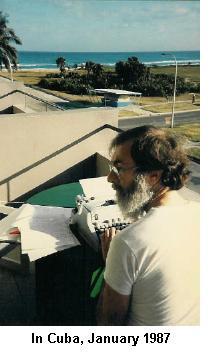Stories
Psychology for Revolutionaries
Psychology for Peace Activists
Why there are so few women warriors
The Seville Statement on Violence
A theory of mental illness
* * *
By the summer of 1984, I had completed Psychology for Revolutionaries, but I decided not to publish it, since I didn't have an audience. But the nuclear freeze movement was flourishing, so I decided I should use the same methodology with a group of great peace activists. I kept DuBois and Martin Luther King Jr. from the first book and chose eight more great peace activists, making sure that I would have half women and half men:
In order to move forward with peace activists, I needed to know the historical context, so I searched for good histories of the American Peace Movements, and could not find any. That meant I would have to do my own original research, and as long as I was doing it, I might as well write it up for another book. That's how my little book, The American Peace Movements, came to be written.
In the spring of 1985 I took a semester at the Center for Humanities at Wesleyan where my project was entitled "Developing Consciousness in Anti-War Activists", in which I developed a first version of Psychology for Peace Activists. Other than Gayatri Spivack who was visiting the Center that semester, the various professors failed to understand what I was doing.

Once I had written both Psychology for Revolutionaries and The American Peace Movements, it did not take long to write Psychology for Peace Activists, since it was based on the other two books. By January 1986, I had a completed first draft, and by September 1986, I had a draft ready to send out for comments. In October and November I sent out letters to get photos and photo permissions, as I wanted a well-illustrated book that would be attractive to young readers. Especially effective was the wonderful photo of Martin Luther King Jr by Robert Sengstacke, which he graciously allowed me to use without royalty. Later, when using the same photo for the UNESCO brochure for the Seville Statement, UNESCO paid him $100 for the use of that photo. In January 1987, I took a portable typewrite to Cuba and typed up a final version to go for printing at the Advocate Press (see photo at left). Lindsay was not happy about this and said she would never again go on vacation with me and a typewriter.
By April, 1987, the book was back from binders and I started to distribute it. As I had done for The American Peace Movements, I published it at the Advocate Press, so that I could sell it cheaply. The flyer advertising the book which I distributed far and wide, gave the following prices: $2.00 for 1-5 copies; $1.50 for 6 or more copies; $1.20 to bookstores. According to my notes in a copy of the book where I kept records, I sold $1236 worth of books in 1987, mostly a few books at a time to individuals and organizations.
In 1989, having distributed the entire first printing, I ordered a second one. Then, in 1995, I revised the book with a new first section including an analysis of the autobiography of Nelson Mandela. Rather than paying the cost for a new printing at Advocate Press, I made photocopies of the new edition and distributed them to friends and colleagues. I put the 1995 edition on the Internet in 2001 where it has received thousands of visitors. And in 2004 and 2005, it was translated into Portuguese (in Brazil) and Dutch (published in Amsterdam).
When I wrote Psychology for Peace Activists, I searched through the Psychological Abstracts looking for information on human consciousness. I found a great deal of information on altered states of consciousness such as drug effects, hypnosis and loss of consciousness, but almost nothing on the kind of consciousness that is "raised" in consciousness-raising groups, or the kind of consciousness that I found in peace activists. I taught a few classes on consciousness development at Wesleyan and got very interesting papers from my students, but although I have not searched the psychological literature more recently, I suppose that the situation has not changed and that academic psychology continues to ignore its most interesting potential subject. In any case, if one goes to the Science Citation Index, there is not one citation for "Psychology for Peace Activists".
The book is available on line at my personal website and a reprinted edition is available at Amazon. It is also available in French .
 |
Stages
1986-1992
Fall of Soviet Empire
1992-1997
UNESCO Culture of Peace Programme